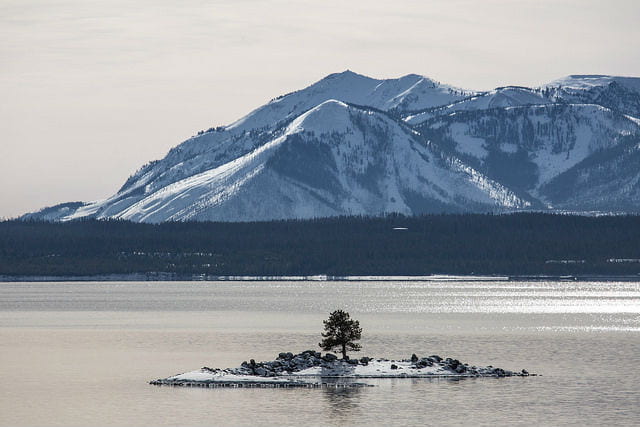BY OLIVIA MURRELL – STAFF WRITER
What’s going on with the Environmental Protection Agency recently?
The environmental justice chief, Mustafa Ali, resigned in early March in the face of proposed budget cuts coming out of the Trump administration. There could be a 30% or more funding cut for the EPA if Congress approves the budget. There is also discussion of eliminating the environmental justice program altogether.
What is environmental injustice?
Environmental injustice, defined by Ali, “deals with the disproportionate impacts that are happening in low-income communities, communities of color and tribal populations.” There are many cases of environmental injustice across the country and the world. A pollution-rich industry being placed in a low-income community of color rather than in the wealthy and predominately white neighborhood down the street points to extreme environmental injustice. If there wasn’t any environmental advantage to putting it in the low-income community, then the decision to do so may be racist or classist. Often, these industries, factories, and dumps are placed in these areas without there being any environmental advantage to doing so.
Some examples include the Chemical Waste Management site in Emelle, Alabama; the PCB landfill in Afton, North Carolina; the Chemical Waste Management landfill in Kettleman City, California; and the Dakota Access Pipeline running through the Standing Rock Sioux tribe.
Scott Pruitt, Climate Change, and Carbon Dioxide:
Earlier in March, Scott Pruitt said that he “would not agree that [CO2] is a primary contributor to the global warming that we see.” He also claimed that there is a “tremendous disagreement about the degree of impact.”
There is an overwhelming body of evidence that disagrees with his statements. NASA, the National Oceanic and Atmospheric Administration, and many other scientific bodies agree that carbon dioxide traps heat in our atmosphere, and humans are responsible for the increased carbon dioxide level in the atmosphere, which rises every day.
In May of 2013, carbon dioxide levels in the air reached 400 parts per million (ppm). This is the first time in human history we have crossed this threshold. We cannot go back below this level again. “Even if the world stopped emitting carbon dioxide tomorrow, what has already been put in the atmosphere will linger for many decades to come.” This is uncharted territory for the human race, and as NASA said, this is a signal that we are “firmly seated in the ‘Anthropocene,’” or the age of this planet characterized by the sweeping and lasting effects on the planet caused by the human race. Many ecosystems can only tolerate a few degrees temperature change, and the levels of CO2 we have reached could mean extreme changes for many ecosystems, and many species are on the path to extinction as their habitats are gravely affected. The larger implications that this climate change will have on ecosystems around the planet stretches far beyond “enjoying warmer weather.”
Budget cuts, and what they mean:
Mick Mulvaney, the director of the Office of Management and Budget, has outlined the proposed budget for 2018. “We wrote the budget by going through the President’s speeches, going through the interviews he had given, and talking to him directly and finding out what his priorities were. We took those words, those policies, and turned them into numbers.” Mulvaney said on CBS This Morning. While it’s unlikely that the budget will pass through Congress in its current form, it is important to understand what it could mean, and what the President’s priorities are.
His priorities seem to lie with the Department of Defense, Homeland Security, Veteran Affairs, and the Social Security administration since those are the areas that will be receiving an increase in budget. The list of departments that will receive a cut in funding is much longer, including the Small Business Administration, the Appalachian Regional Commission, the National Endowment for the Arts, the National Endowment for the Humanities, the EPA, the State Department, the Agriculture department, NASA, and the list continues.
There is currently a proposed 31% cut to the EPA’s funding, and roughly 3,200 employees could lose their jobs as a result. This seems to be in line with what the President values, given that in an interview during his campaign, he said “Environmental protection – what they do is a disgrace. Every week they come out with new regulations…we’ll be fine with the environment. We can leave a little bit but you can’t destroy businesses.”
Regarding cuts to the EPA, Mulvaney said in a press briefing on March 15 that “We absolutely believe, again, as with State, that the core functions of the EPA can be satisfied — in fact, beyond the core functions can be satisfied with this budget.”
However, EPA officials don’t agree.
In an interview with Yale Environment 360, John O’Grady, President of the American Federation of Government Employees Council 238, which represents 10,000 EPA employees, spoke about the proposed budget cuts. “I believe that [EPA Administrator Scott] Pruitt is in place to deconstruct the agency,” says O’Grady. “These individuals and the administration and those that support them in Congress are dead set on rolling back environmental and human health protections to the 1960s.” He continues to say that they are already on a “starvation diet with a bare-bones budget and staffing level” even without the new cuts. The new budget would also shift the power from the federal government to state governments for environmental regulation, but these state departments are understaffed as it is. O’Grady said that they already work with the states, and they level the playing field so that the states enforce with the same amount of stringency. The EPA also deals with pollution, which “respects no state boundary.”
Time Will Tell
Right now, it’s hard to say what will happen to the EPA. This is an issue that everyone should inform themselves about and pay attention to. The environment affects everyone, and it does not care who is president or who runs the EPA.
